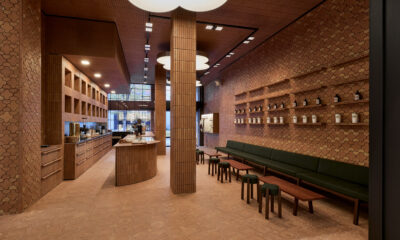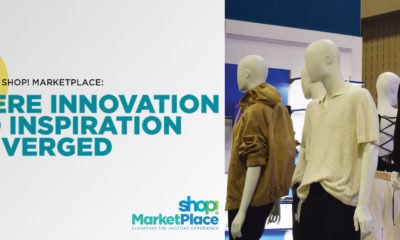When Starbucks Coffee Co. (Seattle) says it’s rolling out a new global store design strategy, that’s no small task. The coffee retailer has more than 16,000 stores in 53 countries around the world.
“We recognize the importance of continuously evolving with our customers’ interests, lifestyles and values in order to stay relevant over the long term,” said Arthur Rubinfeld, president of Starbucks Global Development, last year in announcing the broad initiative. “Our new design approach will allow customers to feel truly at home when visiting their local store and give them opportunities for discovery at our other locations around the world.”
The three main prongs of the program are to celebrate the company’s coffee heritage, to amplify local relevance and to achieve LEED certification for all company-operated stores.
While the new store designs are highly interpretive based on location, they share several core characteristics: celebration of local materials and craftsmanship; focus on reused and recycled elements; and flexibility to meet the needs of many customer types. The Starbucks Global Design team recently collaborated with consultant Charles Sparks of Charles Sparks + Co. (Westchester, Ill.) to renovate its stores in Glencoe and Schaumburg, both suburbs of Chicago.
“We teamed up to create what we called an ‘intelligent place,’ ” says Sparks, “characterized by community, authenticity and thoughtfulness.”
Looking at the locally relevant aspects of Chicago and the Midwest, Sparks focused his design on the city’s idea of neighborhoods and its architectural heritage. Striated wood affirmed the notion of the Chicago school’s prairie style of architecture, but in a rough-hewn way.
Advertisement
A freestanding island on casters in the middle of the room replaced the old condiments counters up against the wall, both to permit greater accessibility and a better flow of traffic, as well as to create a social opportunity.
The new store design also enhances interaction between customers and the barista, who had over time become lost behind high service counters. By simply lowering the counter and removing physical barriers, the barista is better able to connect with customers.
In New York’s SoHo, the approach was more to re-involve the location in the neighborhood’s culture and commercial history. “Materials were used to reference the historic iron-clad architecture and warehouse vibe,” says Tim Pfeiffer, Starbucks senior vp, global design. “We also factored in the fine arts character of the neighborhood and explored the way people use the space, generating a space plan and seating groups to provide greater flexibility.”
In SoHo, as well as at another newly renovated Starbucks store at University Village in Seattle, customer use varied from students plopping down for an afternoon with their laptops to shoppers dropping in for a coffee break. While there’s still lots of comfy seating, there’s also what Pfeiffer calls a “laptop lane,” counter-style seating with outlets for computers along the base. And, in an increasing number of locations, Starbucks is introducing meeting spaces that can be reserved by groups.
But Pfeiffer notes that as customer behavior changes, Starbucks has to adapt. “We’ve seen our customers go from reading books to plugging in laptops to accessing wireless capabilities to, now, using iPads,” he says. “That represents a shift in the way people spend their time. If we’re going to continue being that third place for them, we have to keep meeting their needs, making them comfortable and providing the best cup of coffee.”
Starbucks Shared Planet
Advertisement
A key part of Starbucks’ new initiative is called Shared Planet, the company’s commitment to ethical sourcing, environmental stewardship and community involvement.
Among the goals are to:
• Derive 50 percent of energy used from renewable sources.
• Reduce greenhouse gas emissions by making stores 25 percent more energy-efficient.
• Ensure that 100 percent of cup supply will be reusable or recyclable by 2015.
• Make recycling available wherever Starbucks controls waste collection by 2015.
• Replace incandescent lamps with LEDs as part of a global retrofit program. The retailer projects a 7 percent per-store reduction in energy use.
“We’re sourcing vendors who have the same core values we have,” says Tim Pfeiffer, senior vp of global design.


 Headlines1 week ago
Headlines1 week ago
 John Ryan2 weeks ago
John Ryan2 weeks ago
 Headlines7 days ago
Headlines7 days ago
 Headlines2 weeks ago
Headlines2 weeks ago
 Headlines1 week ago
Headlines1 week ago
 Retail Buzz3 days ago
Retail Buzz3 days ago
 Headlines1 week ago
Headlines1 week ago
 Headlines1 week ago
Headlines1 week ago















